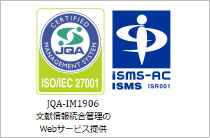ホームIMICライブラリMMWR抄訳2017年(Vol.66)成人の禁煙 ― アメリカ、2000~2015年
2017/01/06Vol. 65 / No. 52
MMWR65(52):1457-1464
Quitting Smoking Among Adults — United States, 2000–2015
成人の禁煙 ― アメリカ、2000~2015年
禁煙は、どの年齢においても有益である。Healthy People 2020では、アメリカ人成人における禁煙試行(現喫煙者のうち過去1年間に2日以上禁煙を試みた)率の目標値を80%以上、最近の禁煙成功(過去6~12カ月継続して禁煙)率の目標値を8.0%以上としている。CDCは、2000年、2005年、2010年および2015年のNational Health Interview Surveysのデータから、18歳以上の成人喫煙者における禁煙行動について調査した。2015年、現喫煙者の68.0%は禁煙を望み、55.4%が禁煙を試みた。禁煙試行率は2000年以降有意に上昇し、2015年が最も高かった。禁煙試行率はアジア系(69.4%)および黒人(63.4%)が白人(53.3%)に比べ高かった。最近の禁煙成功率は、2000年以降有意に上昇し、2015年は7.4%であった。禁煙成功率は一般に学歴が高い者ほど高く、民間医療保険加入者(9.4%)は無保険者(5.2%)やメディケイド加入者(5.9%)に比べ高かった。医療者に禁煙を勧められた者の割合は2000年以降上昇し、2005年および2015年に57.2%と最も高かった。45~64歳(65.7%)および65歳以上(65.7%)の年齢層では、18~24歳(44.4%)および25~44歳(49.8%)に比べ高かった。禁煙試行時にカウンセリングや禁煙補助薬を利用した割合は、2000~2005年に21.9%から29.1%に上昇したが、2010年(31.7%)および2015年(31.2%)には変化が見られなかった。ヒスパニック系(19.2%)やアジア系(20.5%)は白人(34.3%)に比べ利用率が低く、無保険者(21.4%)も低かった。身体障害(39.0%)や深刻な精神的ストレス(41.6%)のある者は利用率が高かった。禁煙成功者のうち、6.8%はカウンセリングを、29.0%は禁煙補助薬を、4.7%は両者を利用していた。調査期間を通し、2015年までに、喫煙経験者の59.1%が禁煙に成功している。医療者は喫煙者に対し禁煙の勧奨と禁煙治療の提供を進め、医療保険会社はエビデンスに基づく禁煙治療を保障の対象とすることにより、禁煙率の向上が可能となるだろう。
References
- US Department of Health and Human Services. The health consequences of smoking—50 years of progress: a report of the Surgeon General. Atlanta, GA: US Department of Health and Human Services, CDC; 2014. <http://www.surgeongeneral.gov/library/reports/50-years-of-progress/full-report.pdf>
- US Public Health Service. Treating tobacco use and dependence: 2008 update. Clinical practice guideline. Rockville, MD: US Department of Health and Human Services, US Public Health Service; 2008. <http://www.ahrq.gov/professionals/clinicians-providers/guidelines-recommendations/tobacco/index.html>
- Siu AL; US Preventive Services Task Force. Behavioral and pharmacotherapy interventions for tobacco smoking cessation in adults, including pregnant women: U.S. Preventive Services Task Force recommendation statement. Ann Intern Med 2015;163:622–34. <http://dx.doi.org/10.7326/M15-2023>
- CDC. Best practices for comprehensive tobacco control programs—2014. Atlanta, GA: US Department of Health and Human Services, CDC; 2014. <http://www.cdc.gov/tobacco/stateandcommunity/best_practices/index.htm>
- McAfee T, Babb S, McNabb S, Fiore MC. Helping smokers quit—opportunities created by the Affordable Care Act. N Engl J Med 2015;372:5–7. <http://dx.doi.org/10.1056/NEJMp1411437>
- Jamal A, King BA, Neff LJ, Whitmill J, Babb SD, Graffunder CM. Current cigarette smoking among adults—United States, 2005–2015. MMWR Morb Mortal Wkly Rep 2016;65:1205–11. <http://dx.doi.org/10.15585/mmwr.mm6544a2>
- Patnode CD, Henderson JT, Thompson JH, Senger CA, Fortmann SP, Whitlock EP. Behavioral counseling and pharmacotherapy interventions for tobacco cessation in adults, including pregnant women: a review of reviews for the U.S. Preventive Services Task Force. Ann Intern Med 2015;163:608–21. <http://dx.doi.org/10.7326/M15-0171>
- Malarcher A, Dube S, Shaw L, Babb S, Kaufmann R. Quitting smoking among adults—United States, 2001–2010. MMWR Morb Mortal Wkly Rep 2011;60:1513–9.
- Cohen RA, Martinez ME, Zammitti EP. Early release of selected estimates based on data from the National Health Interview Survey, 2015. Hyattsville, MD: US Department of Health and Human Services, CDC, National Center for Health Statistics; 2016. <http://www.cdc.gov/nchs/nhis/releases/released201605.htm>
- Binnie V, McHugh S, Macpherson L, Borland B, Moir K, Malik K. The validation of self-reported smoking status by analysing cotinine levels in stimulated and unstimulated saliva, serum and urine. Oral Dis 2004;10:287–93. <http://dx.doi.org/10.1111/j.1601-0825.2004.01018.x>
Copyright © 2013 International Medical Information Center. All Rights Reserved.












